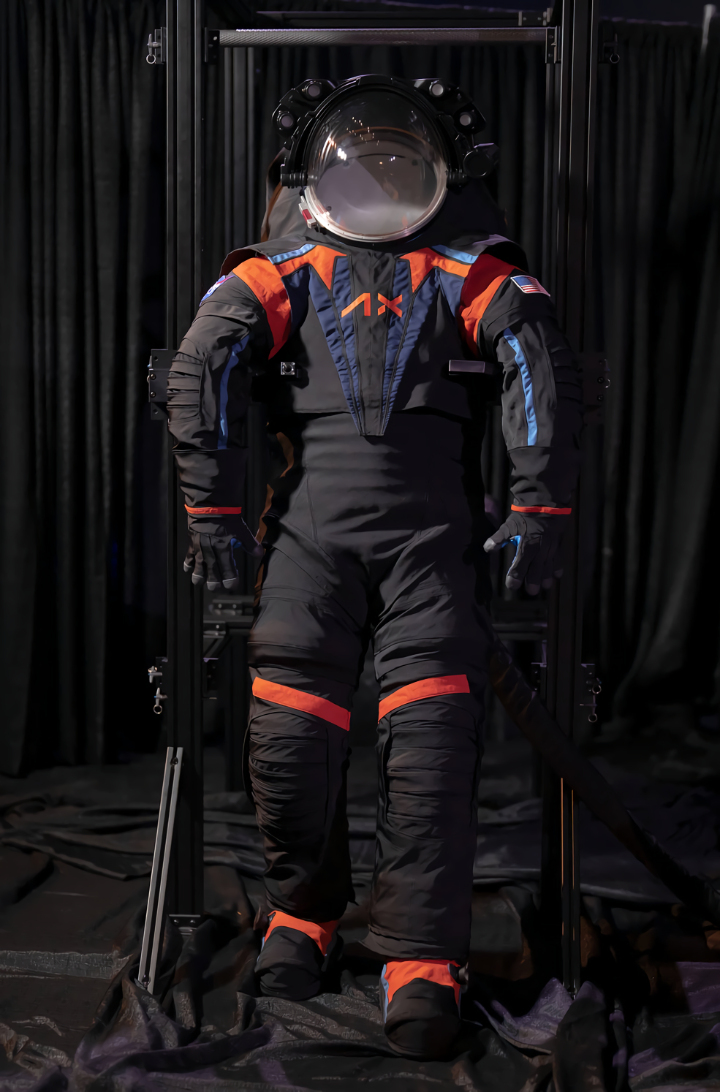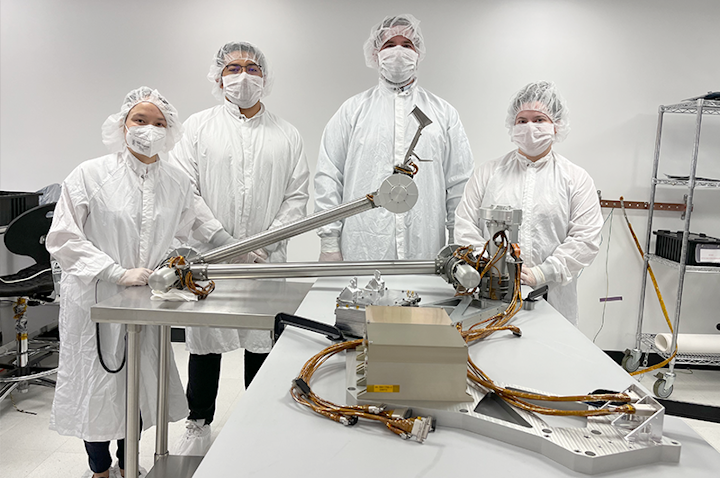News

New Looks on the Moon: NASA Unveils Artemis Astronauts’ Moon Suit
In March of this year, NASA unveiled the spacesuit that astronauts onboard the Artemis III mission to the surface of the Moon will be wearing. The suit, developed by Axiom Space, is a major change from the bulky suits worn by the Apollo astronauts in the late 1960s and early 1970s as they “bunny hopped” across the lunar surface. The design for the suit, called the Axiom Extravehicular Mobility Unit (AxEMU), is based on NASA’s preliminary Exploration EMU (xEMU) prototype work.

The AxEMU will be worn by astronauts on the Moon beginning with the Artemis III mission. Credit: Axiom Space
This transfer of design for the Artemis Program spacesuit from NASA to a commercial contractor is another example of how the U.S. space agency is seeking to capitalize on the earlier successes of its commercial partnerships. These partnerships have seen private companies in the U.S. take over from NASA on transporting materials and astronauts to and from the International Space Station following the retirement of the Space Shuttle, and have played a key role in advancing the Artemis Program.
While NASA continues to do some engineering work, the agency continues to expand the role of commercial enterprises in both manned and unmanned space exploration. Since the 1960s, NASA has worked closely with private companies to manufacture key spaceflight technologies. However, in the second decade of the 21st century, the role of those private companies has shifted more from simply manufacturing to carrying out independent engineering and operations. The Artemis Program, which seeks to return astronauts to the Moon, has relied heavily on these commercial partnerships to reduce costs and develop new capabilities.
Although many space enthusiasts are familiar with the major components of the Artemis Program — the Space Launch System (SLS), Orion Crew Capsule, Lunar Gateway, etc. — NASA has developed partnerships with other companies that seek to enable the success of the program in different ways. One of these partnerships, which has grown significantly over the last several years, is with Motiv Space Systems. Using Motiv’s robotics and mechanical system engineering and technology, NASA will further enable the success of the astronauts on the surface of the Moon and other future manned and unmanned space exploration.
Motiv’s Cold Operable Lunar Deployable Arm (COLDArm) is one of those key technologies. Using technology developed at NASA-JPL, Motiv has produced a robotic arm system that is capable of operating in the extreme cold of the lunar south pole region without the need for bulky and power-hungry heating elements. This will not only reduce the mass and cost of a robotic arm for the Artemis Program, but also free up astronauts for other tasks.

Motiv’s COLDArm at NASA-JPL.
By continuing to partner with commercial entities like Axiom Space and Motiv Space Systems, NASA is committing to a future of space exploration that reduces costs and encourages innovation. As NASA transfers more technology to these companies, giving them an opportunity to apply them in new ways, Motiv and others are providing valuable engineering advances and applications while simultaneously allowing the space agency the freedom to focus on other tasks.